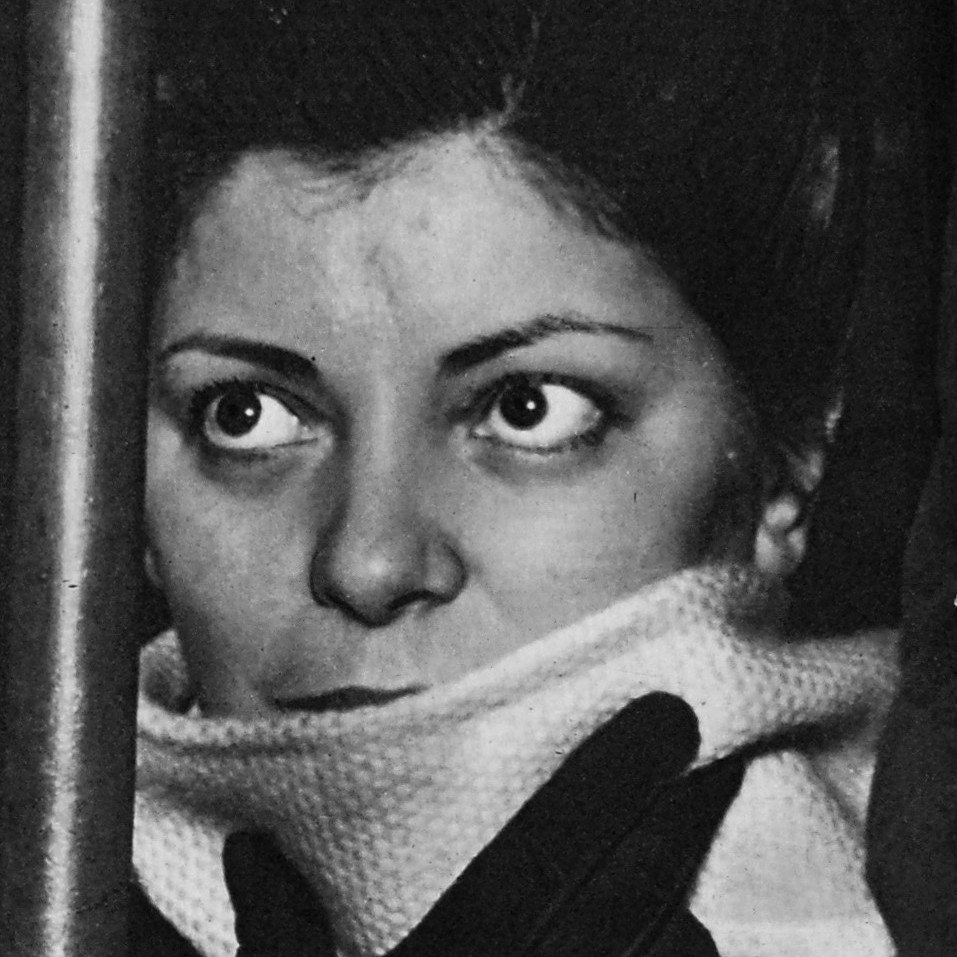
1915 - 1988
Caterina Fort
Summary
Name:
Nickname:
The Beast of Via San Gregorio / The Beast with the Canary-Colored ScarfYears Active:
1946Birth:
June 28, 1915Status:
DeceasedClass:
Mass MurdererVictims:
4Method:
Bludgeoning / Suffocation / Blunt force traumaDeath:
March 02, 1988Nationality:
Italy
1915 - 1988
Caterina Fort
Summary: Mass Murderer
Name:
Caterina FortNickname:
The Beast of Via San Gregorio / The Beast with the Canary-Colored ScarfStatus:
DeceasedVictims:
4Method:
Bludgeoning / Suffocation / Blunt force traumaNationality:
ItalyBirth:
June 28, 1915Death:
March 02, 1988Years Active:
1946Date Convicted:
April 9, 1952bio
Caterina “Rina” Fort was born on 28 June 1915 in Santa Lucia di Budoia, Italy. Her early life was shadowed by hardship and personal tragedy. Her father died during a mountain hike while trying to help her overcome a difficult stretch of the trail. Later, her fiancé died of tuberculosis shortly before their planned wedding.
By her early twenties, Rina discovered she was prematurely sterile, a discovery that reportedly weighed heavily on her sense of self-worth. At 22, she married Giuseppe Benedet, a fellow townsman. On their wedding day, Benedet began to show symptoms of severe mental illness, which eventually deteriorated into madness so grave he was committed to a psychiatric asylum. The marriage ended in legal separation, after which Rina resumed her maiden name and moved to Milan to live with her sister.
In 1945, she met Sicilian businessman Giuseppe Ricciardi, owner of a fabric shop in Via Tenca. She first worked for him as a clerk, and soon they began a romantic relationship. According to her account, she was unaware that Ricciardi was married and had three children in Catania. Their affair continued until October 1946, when Ricciardi’s wife, Franca Pappalardo, moved to Milan with their children after learning of her husband’s infidelity.
Once Franca and the children arrived, the relationship was effectively doomed. Franca reportedly warned Rina to stay away and revealed she was pregnant again, deepening Rina’s bitterness and jealousy. Ricciardi eventually dismissed Rina from the shop. She found new work at a pastry shop but continued to see Ricciardi sporadically.
Those who later studied the case saw in Rina Fort a woman driven by a combination of loneliness, emotional instability, and wounded pride. The resentment and rejection she felt toward Franca Pappalardo and her children would ultimately turn lethal.
murder story
On the night of 29 November 1946, Rina Fort committed one of the most infamous crimes in post-war Italy. In a confession she gave under intense police interrogation, she described how she wandered aimlessly before arriving at the Ricciardi family apartment on Via San Gregorio. She claimed that Franca greeted her calmly and even offered her a glass of lemon water and later a liqueur. However, when Franca insisted she end the affair and leave Giuseppe alone, Rina snapped.
Rina retrieved a heavy iron object from the kitchen and struck Franca repeatedly on the head, knocking her unconscious. As Franca’s young son Giovanni tried to protect his mother, Rina threw him across the room and struck him as well. She then attacked the other children, Giuseppina and the baby Antonio, bludgeoning them where they sat and stood.
According to her confession, she ransacked the apartment, removed some money and jewelry, and attempted to simulate a burglary. Before leaving, she poured an unidentified liquid over the wounded victims and stuffed rags soaked in the same fluid into their mouths. Franca, though grievously wounded, remained conscious long enough to whisper to Rina, “I forgive you because Giuseppe loves you so much...I recommend the children to you.”
Rina left the apartment with her victims still dying, returned home, and calmly prepared food. The following morning, Ricciardi’s new shop assistant, Pina Somaschini, arrived to collect the shop keys and discovered the gruesome scene. The police were immediately called.
The investigation, led by the renowned Commissioner Nardone, quickly established that the crime was not a simple robbery. Among other evidence, investigators noted the familiarity shown by the victims in opening the door and the lack of valuables taken. Suspicion soon fell on Rina, who was arrested less than 24 hours later while working in the pastry shop.
During long interrogations—she later claimed she was beaten—Rina alternated between partial admissions and efforts to deflect blame onto Ricciardi and an alleged accomplice she called “Carmelo.” However, she eventually confessed to being the sole perpetrator of the killings.
Rina was held in San Vittore prison and later transferred to Perugia and then Florence. She became a notorious figure in the Italian press, dubbed “the Beast of Via San Gregorio” and “the Beast with the Canary-Colored Scarf.”
On 9 April 1952, after a widely publicized trial, she was sentenced to life imprisonment. The Court rejected her claim that she had not killed the children. An appeal to the Court of Cassation in November 1953 upheld the conviction.
Rina served nearly three decades behind bars. In 1975, she was granted a pardon by President Giovanni Leone, after the surviving Pappalardo family members agreed not to oppose clemency. Upon release, she took back her married surname, Benedet, and sometimes called herself Rina Furlan. She spent her final years living quietly in Florence with a family who took her in, dying of a heart attack on 2 March 1988.